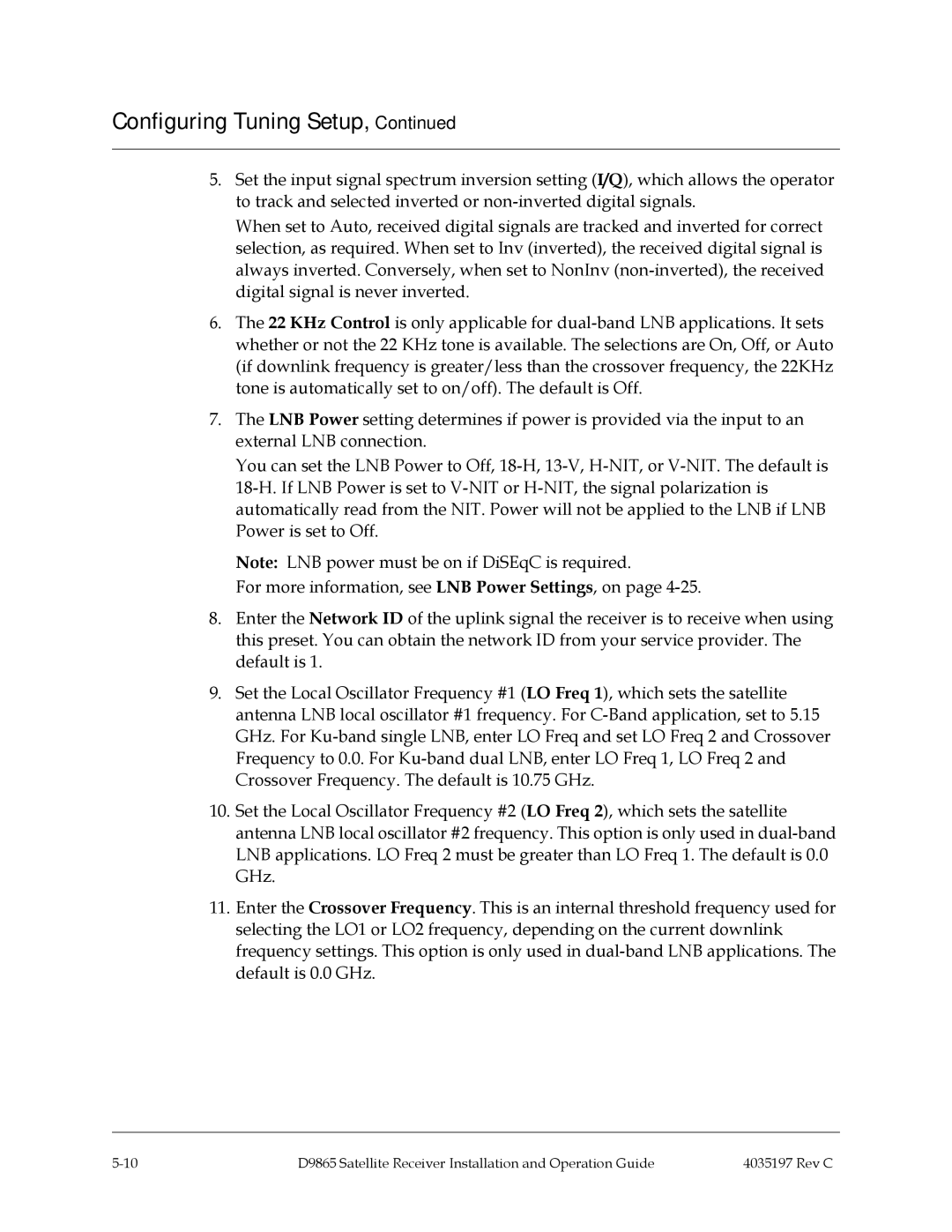
Configuring Tuning Setup, Continued
5.Set the input signal spectrum inversion setting (I/Q), which allows the operator to track and selected inverted or
When set to Auto, received digital signals are tracked and inverted for correct selection, as required. When set to Inv (inverted), the received digital signal is always inverted. Conversely, when set to NonInv
6.The 22 KHz Control is only applicable for
7.The LNB Power setting determines if power is provided via the input to an external LNB connection.
You can set the LNB Power to Off,
Note: LNB power must be on if DiSEqC is required.
For more information, see LNB Power Settings, on page
8.Enter the Network ID of the uplink signal the receiver is to receive when using this preset. You can obtain the network ID from your service provider. The default is 1.
9.Set the Local Oscillator Frequency #1 (LO Freq 1), which sets the satellite antenna LNB local oscillator #1 frequency. For
10.Set the Local Oscillator Frequency #2 (LO Freq 2), which sets the satellite antenna LNB local oscillator #2 frequency. This option is only used in
11.Enter the Crossover Frequency. This is an internal threshold frequency used for selecting the LO1 or LO2 frequency, depending on the current downlink frequency settings. This option is only used in
D9865 Satellite Receiver Installation and Operation Guide | 4035197 Rev C |
